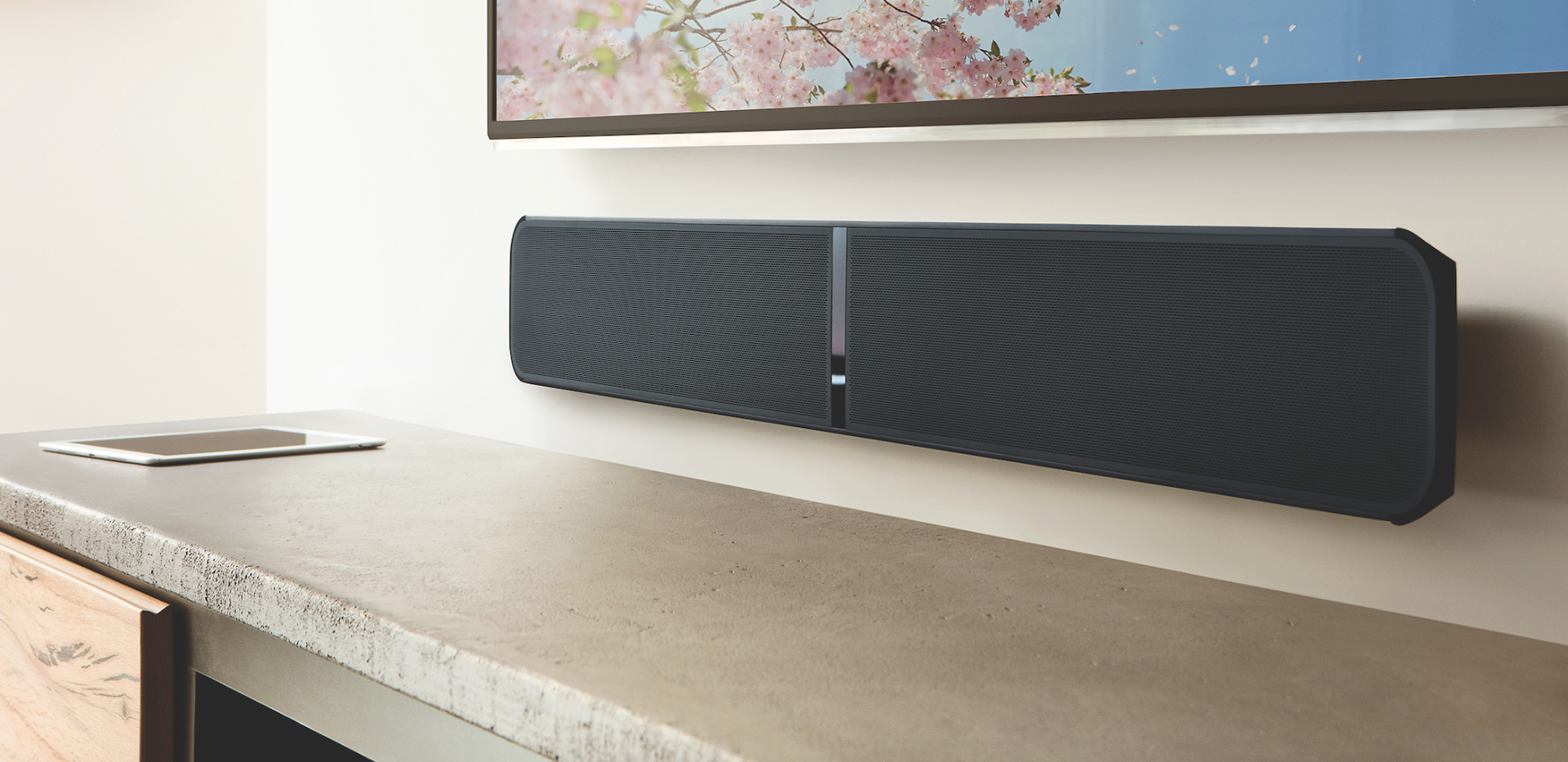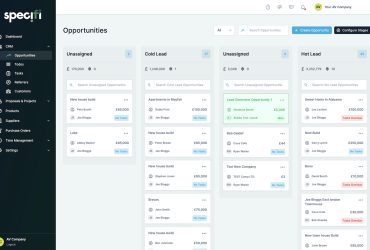At first it didn’t have a name at all. Then it was “Sovi.” Today, it’s Bluesound, the youngest of Lenbrook Inc.’s three audio brands, along with NAD Electronics and PSB Speakers.
Launched in 2013, the Bluesound wireless multi-room music lineup is Lenbrook’s largest brand. Moreover, technology developed for Bluesound has found its way into several NAD products, and will is used in PSB products as well.

But Bluesound almost didn’t happen. The creation of the brand involved some bold decisions, serious investment, and more than a dash of serendipity. When Lenbrook first considered adding music-streaming products, its first plan of attack was to source products from another vendor, and re-badge them with the NAD brand. Even after Lenbrook decided to develop the technology in-house, there was internal debate about whether to create a new brand, or capitalize on the equity of the NAD brand.
IN THE BEGINNING
The Bluesound story goes back over a decade, to an internal meeting on technology planning and brand development. “We were seeing the start of streaming,” Gord Simmonds, President and CEO, Lenbrook Group of Companies relates. “Thinking about what NAD should do, we asked, ‘What’s the source? What’s the situation for source products?’”
It’s helpful to recall the context. By the mid-naughts, consumers were abandoning packaged media in favour of downloads. Apple’s iTunes Store was well on its way to becoming the world’s largest music retailer. Online streaming services still lay in the future. In 2007, the number of iPods sold by Apple surpassed 100 million; and that year, the company would launch the first iPhone.
In those days, the music on all those i-devices was typically downloaded to a PC or Mac, or else ripped from CD, before being transferred to the portable player. Some hobbyists were finding ways of streaming music from their PC libraries to their audio systems. A popular option was Squeezebox network music players, originally developed by Slim Devices, Inc., which Logitech International S.A. purchased in 2006.
Sonos had been in the market for a couple of years, but had not yet achieved the dominant position it would later enjoy. Interestingly, Lenbrook briefly served as Sonos’ Canadian distributor in the mid-naughts.
The question for Lenbrook was how to remain relevant in a world where music consumption habits were changing rapidly. The company decided to move ahead with a project it code-named “Sovi.” That name is an inversion of Viso(Vision-Sound), a NAD sub-brand that was then under development. The first Viso product, the NAD Viso 1 iPod speaker system, appeared in 2010 to considerable acclaim.
FINDING A PATH
Having decided to proceed with Sovi, Lenbrook faced a classic buy-or-build decision. “We took a trip to the west coast and visited a bunch of companies, including Logitech,” Simmonds recalls. “We were looking at taking the Squeezebox product, changing the form factor, and private-labeling it. We were close to the altar when things went a bit cold on their side. Subsequently, Logitech closed the Squeezebox business down; so it was fortunate that we didn’t go down that path.”

There were other possibilities. A silicon vendor had a product that performed most audio-streaming functions in a single chip set. “We could buy their stuff and put a little bit of our magic around it,” Simmonds says.
A young member of the Lenbrook team had a different vision. Relates Simmonds: “He said we might be smarter to do this ourselves instead of taking someone else’s work and be beholden to them for changing the system. Between our guys and a few guys he knew, he thought we could pull it off. It would take us four or five months longer, but then it’s ours.”
So Lenbrook would build rather than buy, although that four-to-five-month timeline turned out to be optimistic. Even so, having complete control of the system, including the ability to add features and issue updates, turned out to be a huge advantage.
By the late naughts, Sonos was becoming the dominant player in whole-house music; and its position would continue to strengthen with time.
“Like a lot of people in the CE industry, we wondered, why is no one taking Sonos on?” Simmonds says. “We were audio guys, and this was computer stuff. But it didn’t take long to figure out they were doing something interesting.”

On the audio side, Lenbrook could easily compete with Sonos, having expertise in both amplifier and loudspeaker design. As an example, one need look no further than the Bluesound Pulse Soundbar. According to Paul Barton, Founder and Chief Designer of PSB Speakers, the three-way tri-amplified design is flat at normal listening levels down to 30Hz – an astonishing claim for such a small enclosure. This is accomplished through frequency-dependent dynamic compression, applied using digital signal processing (DSP). “We can put in the smarts to identify the limits of the system and make it as transparent as possible,” explains Barton, who’s responsible for acoustic engineering on all Bluesound speakers. “This lets the speaker do what it can do, and no more.”
TEAM BUILDING
On the other hand, Sonos had a big head start in software and networking. It had an elegant user interface, and robust mesh-networking technology that enabled it to stream music through users’ homes reliably. But with technology, there are benefits to being second to market.
When Sonos launched, home Wi-Fi networks were less reliable than they are today. To prevent dropouts, the first Sonos products ran on wireless networks that were separate from the home Wi-Fi network. As Wi-Fi became more reliable, Sonos changed its platform to support Wi-Fi, eliminating the need for a dedicated network Hub.
Bluesound was Wi-Fi-based from the get-go. That means Lenbrook didn’t have to throw resources at developing the network portion of Bluesound: it could use off-the-shelf technology.
Sonos came to market a couple of years before the smartphone era began. The first Sonos systems were controlled from application software that ran on a PC or Mac. For customers who wanted more convenient operation, Sonos also offered a proprietary controller. iOS and Android apps came later.
By the time Bluesound was in development, the smartphone revolution was well underway. That meant Lenbrook had to build apps for smart- phones and tablets, but not dedicated controllers.
The main challenge was building the underlying software platform. Based on the open-source Linux OS, that platform ultimately became BluOS, which is at the heart of every Bluesound device, and in a growing number of NAD products as well.
By that time, NAD’s products included AV receivers, products that have a significant software component. For example, HDMI handoffs were a messy function that required software expertise. To address that need, Lenbrook had assembled an internal team of six developers.
Moreover, Lenbrook has a decentralized structure, with engineering talent in diverse locations. This made it natural for the company to supplement internal development with outside resources. “People would tell us, ‘If you want to do that, you have to talk to this guy,’” Simmonds elaborates. “Most of the people we approached had never heard of Lenbrook, but they all knew NAD. Several had owned a NAD amplifier.

“One of them was a really bright guy that we met on our west-coast trip,” he continues. “He had a device that became the foundation of our Vault. We ended up licensing it from him; and he joined our team as a consultant.”
Simmonds says building the platform internally added close to a year to the development time. “If we knew then what we know now what this would take …” he muses before trailing off. “Well, now that we have validated it, of course we’d have done it. But it took longer than we anticipated, and of course a lot more capital.”
BRAND PROFILE
Around the same time Lenbrook decided to proceed with Sovi, David and Norman Chesky of the audiophile label Chesky Records launched HDTracks. That online music store began offering high-res downloads in 2008. “Our guys are music lovers,” Simmonds says, “so they were collecting high-resolution files. They realized we have the horsepower to support high-res.” So early on, Lenbrook decided to enable playback of streams to 24 bits/192kHz on its new wireless platform.
Sonos has steadfastly refused to go down that road, insisting that there are no meaningful benefits for going beyond CD resolution. Obviously, many audio enthusiasts (myself included) think differently, though one can question whether those differences can be heard in the tabletop speakers that are the most common playback devices in multi-room audio.
In my experience, they can. Last fall, I had an opportunity to compare CD-resolution and high-res versions of the same music through the Bluesound Pulse 2 speaker. On a selection of pop, jazz and classical tracks, the high-res versions sounded smoother, more dynamic, and more tactile. It wasn’t night-and-day, but it was noticeable.
For casual listening through a tabletop speaker, those differences may not be important to most people. But for critical listening in zones with audiophile-grade speakers and amplification, those differences may be very important for end users. An even more important consideration is enabling audiophiles to play their high-res files over the network, instead of getting an error message and silence.
Another major change was afoot. Internet streaming was emerging as a major music source, especially for younger listeners. Formed in 2006, Spotify began service in 2008, though it didn’t really pick up momentum until the following decade. As of 2020, Spotify has 108 million premium subscribers and a total of 232 million active users.
Audio enthusiasts were an important part of the target market for Bluesound from the start. But so were young music-lovers who had never owned a hi-fi system. “These are two very different segments,” comments Chief Strategy Officer John Banks. “There is a whole demographic who grew up listening to headphones and have no clue about what to do for sound in their first home. We felt there was an opportunity to embrace that generation. We have powered speakers for that group. Then there are people who grew up with hi-fi. The Node and Vault address that community. We believed there was a potential to rekindle interest in people who used to enjoy hi-fi, but now had their systems stashed in the basement. They can bring their old systems into the modern era just by adding a box.”
Almost all wireless multi-room platforms include a controller like the Node and amplifier/ controller like the PowerNode. But a CD ripper/ music server like the Vault is much less common. “I remember having a discussion with one of the key development guys at Spotify,” Simmonds recalls. “He wondered why we’d have a product like the Vault, and thought it was doing our brand a disservice. I told him Spotify should be thanking Bluesound for developing a product like that. We see the Vault as a transitional product for people in my generation who have a bunch of CDs and don’t want to throw them away. I can rip them and store them, and they’re all in my library, along with my streamed music.”
BRAND-NEW BRAND
In parallel with hardware and software development, Lenbrook was figuring out how it would bring the new system to market. “There was internal discussion whether it should be NAD or a new brand altogether,” Banks recalls. “It could have gone either way. Outside of our industry, the NAD brand is a relative unknown. I felt strongly that a separate brand in this new space would give us the freedom in distribution it needed to be successful. It would allow us to address new consumers outside of our legacy business.”
Elaborates Simmonds: “It was the early days of the struggle between indirect and direct distribution. We’ve been very careful making sure our NAD and PSB dealers don’t have to worry about us competing with them. But a lot of consumers weren’t going to use the added value our dealers provide; they’re quite content to get information on the Web.”
That doesn’t mean that retail distribution was irrelevant. “At that point, the biggest complaint dealers had about Sonos was the wide distribution and limited margins,” Simmonds explains. “So we thought we would create a product that would offer dealers a step-up option, as well as open up possibilities for different types of distribution. If we had put the NAD brand on it, our feeling of loyalty may have limited some of the possibilities.”
In July 2010, Banks engaged a marketing agency to help find a brand name. He wanted a brand that was descriptive of the product and its function. But he also wanted to convey emotion, how the product makes you feel.
Working together, the agency and Lenbrook developed several possibilities, including “Muze” (a play on music), “Nimbus” (a play on cloud technology) and “Thesis” (“that didn’t go very far,” Banks says). Some names didn’t work, and others weren’t available.
At some point, the agency floated the idea of using a colour name as a brand. “What hit me was the colour blue and its relationship to music,” Banks says. “It’s helpful if the brand name can indicate what you do, so we added a description: Bluesound. At first it seemed weird, but it stuck. It resonated with me. And it was available. It became our working name, and soon everybody was using it.” By the end of the 2010, Sovi had a new (and permanent) name. Bluesound it would be.
Next, Banks engaged an agency in Montreal to create a logo. “The process wasn’t as protracted as coming up with a brand name,” he says. “We liked having our name in the logo. We’re not Nike, so no one is going to recognize us because of a swirl.”
SOFT LAUNCH
In terms of industrial design, Lenbrook went outside the box – quite literally. The first-generation Node, PowerNode and Vault all had a diamond-shaped profile, with a front panel that jutted outward in the centre. “We wanted to do something to that didn’t look like traditional hi-fi,” Simmonds explains. “Fifty per cent of people really liked it because it was different, but other people said they’d rather have something more discrete.”
The hardware design was finished before the software. Simmonds was all too aware the technology landscape is littered with products that were released prematurely, and failed because of buggy code. “We knew it wasn’t going to be perfect,” he acknowledges, “but it had to be solid, because the Internet doesn’t let you get away with less.”
So Lenbrook deliberately took a go-slow approach, starting with a soft launch through AudioNord International A/S, its Scandinavian distributor. AudioNord operates Hi-Fi Klubben, a large electronics chain with locations in Norway, Sweden, Denmark, Germany and The Netherlands.
“This was a real live test case,” Simmonds says. “We knew the product was performing well enough, but still needed some work. We worked with the user base and Hi-Fi Klubben to support the product really well and improve the user experience.”
With the insights gained from the European experiment, Lenbrook was ready to launch Bluesound in North America. Banks was tasked with messaging, a tricky exercise given the diverse market for the brand. “We didn’t want to alienate either audience,” says Banks, referring to hi-fi enthusiasts and people new to hi-fi. “We created a style guide that appealed across all audiences. We needed a message that would resonate with both groups: the quality of the sound. Even if you’re a neophyte, you can still relate to high-quality sound.”
HALO EFFECT
Among hi-fi enthusiasts and dealers, Bluesound benefits from its close association with NAD and PSB. Comments Simmonds: “We’ve never hidden the fact that Bluesound was spawned out of the things we’ve learned over 45 years on those brands.”
That relationship is now working in the reverse direction. For example, NAD’s Classic-series C 368 and C 388 hybrid digital DAC amplifiers accept an optional BluOS module. This lets them function as part of a Bluesound whole-home music system, allowing high-res streaming via Wi-Fi or Ethernet. The NAD C 658 BluOS Streaming DAC becomes a node in the BluOS ecosystem allowing high res network streaming to 64 zones and control options for iOS, Android, Windows, and Mac OS phones, tablets, and desk top devices.
BluOS will be used on new PSB products as well. “PSB has had to lie a little fallow while we were working on this,” Simmonds elaborates, “but you can be sure that that brand can be modernized quite rapidly. We think active speakers and the BluOS platform can go well together.
“NAD and PSB both have a great reputation, but we think they have to become more modern,” he continues. “This is a chance to take what the two brands have done well and take them to the next level.”
Bluesound, too, continues to evolve. Following the mixed reception to the first-generation series, Lenbrook launched Gen 2 Bluesound in the fall of 2015. Designed by the same firm that did the Gen 1 models, the Node 2, PowerNode 2 and Vault 2 have a more conventional rectangular profile. Explains Simmonds: “It’s doesn’t call out, ‘Huge decision! Do I like that or not?’ Everyone sort of likes it. Maybe they don’t love it but they really like it.”
All products now have headphone outputs and built-in Bluetooth; previously Bluetooth connectivity required a dongle. The Gen 2 products also have improved media boards, with better parts and more processing power, while preserving full backward compatibility with first-generation models.
“We spun Gen 2 out quickly, which took a big investment in time and effort and money,” Simmonds says. “But it was totally the right thing to do. Generation 2 is much more ready for primetime.”
INTO THE FUTURE
Simmonds says the investments are paying off. “Bluesound is on a great trajectory. We’re pretty close to being on the positive side of the ledger. The thing is that BluOS is an ongoing development. We’re committed to continuing to develop the interface and keep integrating. If a new music service comes along that we think is important and is willing to integrate with us, we’ll support it. Depending on the service, that can be quite simple or really tough.”
An update late last year made all BluOS-driven products compatible with Control4, Crestron and RTI home-automation systems. Earlier this year, Lenbrook made all BluOS products compatible with Roon Labs’ music-library software. All updates are thoroughly tested in an in-house quality-assurance department (another significant investment) before being released.
Bluesound was the first wireless multi-room system to support MQA high-resolution streaming. Greg Stidsen, Director of Technology and Product Planning for Lenbrook, says Bluesound is MQA’s largest licensee and the BluOS app for iOS and Android allows full handheld control of MQA playback. Bluesound devices do full hardware rendering of the MQA stream, a process Stidsen compares to “corrective lenses for your DAC. It lines up all the filters to give good impulse response.”
Stidsen says having MQA support has generated real buzz for Bluesound. “We saw it spike after the TIDAL announcement. From the very beginning, high-res has been what we’re about.”
High-res streaming was the biggest audio story of 2017, and Bluesound was right there at the middle of it. No surprise there, because it ties in with the brand’s core values.
“For us, Bluesound is about extending our hi-fi competencies,” Simmonds states. “We’re banking on the fact that there are people buying basic stuff and people buying step-up products. If we can get five to 10 per cent of the market, for a Canadian company self-developing their own platform, that’d be a good return for us









